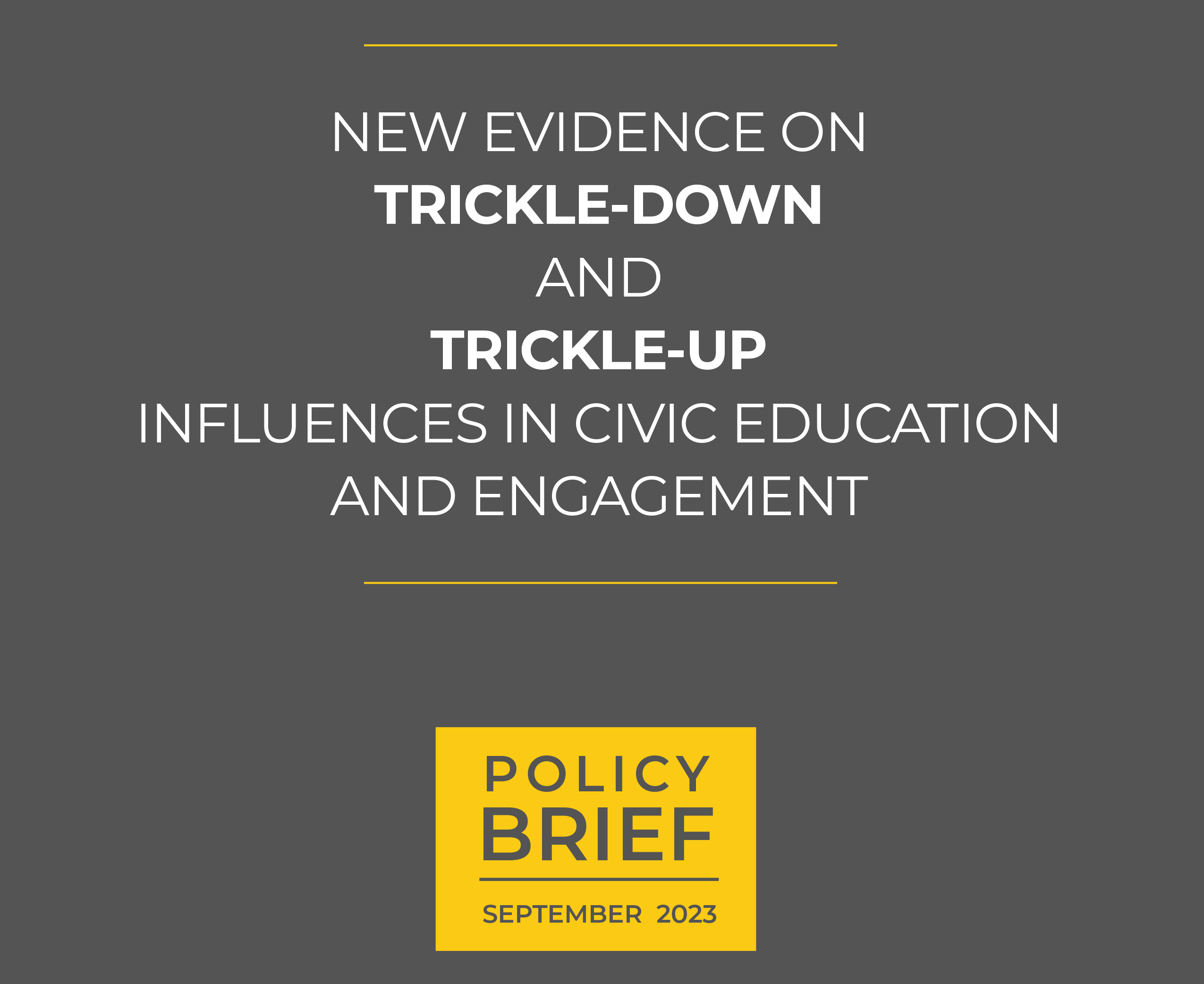New Evidence on Trickle-Down and Trickle-Up Influences in Civic Education and Engagement
New Evidence on Trickle-Down and Trickle-Up Influences in Civic Education and Engagement uses K-12, birth, and voting records for over 580,000 students to compile descriptive evidence on how trickle-down and trickle-up socialization influences civic engagement.
Findings
-
- There is evidence of significant trickle-down (mother-to-child) and trickle-up (child-to-mother) relationships in civic engagement.
-
- Trickle-down relationships appear strongest for white students and students who do not qualify for free or reduced-price lunch.
-
- Trickle-up relationships appear strongest for non-white students and students who qualify for free or reduced-price lunch.
-
- These estimates are statistically significant and often substantial.
Click here to view the policy brief Appendix.
In The News

Kirsten Slungaard Mumma | Policy brief author
Kirsten Slungaard Mumma is assistant professor of Economics and Education at Teachers College, Columbia University. She holds an A.B., an Ed.M., and a Ph.D., all from Harvard. Her research is in the economics of education. She studies how education programs and policies affect the economic, social, and political outcomes of children and adults.

Liam Julian | Vice President, Programs & Public Policy
Liam Julian is Vice President of Programs & Public Policy at the Sandra Day O’Connor Institute for American Democracy. He was previously managing editor of Policy Review magazine in Washington, D.C., and a research fellow at Stanford University’s Hoover Institution. His writing and commentary on public policy have appeared in publications such as The Washington Post, The Atlantic, National Review, and RealClearPolitics, and on NPR programs including Morning Edition and All Things Considered. He also directed development of Advanced Placement curricula at the College Board, including leading the redesign of the AP U.S. Government and Politics course.
For more information about this policy brief, contact him at ljulian@oconnorinstitute.org
Press Release: Premier Study Finds New Evidence of Both Mother-to-Child (Trickle-Down) and Child-to-Mother (Trickle-Up) Relationships in Civic Education and Engagement

